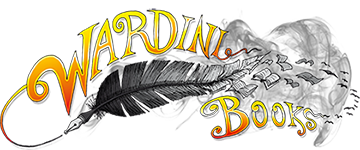A Technical History of America's Nuclear Weapons - Volume I - Introduction and Developments to 1960 - Second Edition
Author(s): Peter Goetz
This is the Second Edition of A Technical History of America's Nuclear Weapons: Volume I - Introduction and Nuclear Developments Through 1960. It is called a technical history because it focuses on nuclear weapons and nuclear weapons (delivery) systems. The people, laboratories, and politicians who championed these weapons have been dealt with by other authors. For the convenience of the Reader, Volume I has an introductory section that places the American nuclear arsenal into its historical context and provides the basic technical background needed to understand the weapon's mechanisms. Included are chapters on weapon design, the military-industrial complex, and stockpile logistics. These are followed by a discussion intended to clearly convey what would have happened if nuclear weapons were ever put to use. The introduction closes with a review of early warning and targeting, nuclear war plans, the deployment of nuclear forces, and the evolution of strategic doctrine during the period of the Cold War. It also includes sections on non-proliferation and the current management of the US Nuclear Stockpile. This story is told in a straightforward easy to understand manner. The use of equations is shunned. Albert Einstein declared that if you can't tell a story without the use of mathematics, you really don't understand your subject matter. The second half of Volume I examines early American nuclear weapons and delivery systems. It combines development histories with engineering descriptions to illustrate the performance characteristics of the weapons and the design challenges that faced their developers. Basic data about weapon operation, delivery systems, and deployments are also included. Like the First Edition, this Second Edition is lavishly illustrated with hundreds of photographs.Volume I: 1) Has about 1,000 selected references, grouped into related categories 2) Uses official Military Characteristic (Parts) Numbers for components where available, a very useful tool for internet searches 3)Provides detailed information on the production of uranium and its enrichment in for use in nuclear weapons 4) Provides detailed information on the recovery of plutonium from spent fuel rods and the casting of plutonium cores 5) Outlines the evolution of nuclear pits: solid, composite, levitated, hollow, boosted, linear and linear boosted. 6) Provides information on explosives and the methods used to compress fissile cores, especially the plastic bonded explosives (PBX) produced at the Holston Army Ammunition Plant, Kingsport, Tennessee 7) Outlines the development of the batteries and the arming, fuzing, and firing (X-Unit) systems used in various nuclear MARKs and MODs 8) Outlines the internal and external electronic neutron initiation systems used in various nuclear MARKs and MODs 9)Describes boosted warheads, the forerunners to the hydrogen bomb 10) Follows the race to develop hydrogen bombs and investigates the first generation of multi-megaton weapons and their delivery aircraft.
Product Information
General Fields
- :
- : Independently Published
- : abe
- : 1.56489
- : 01 September 2020
- : 1.468 Inches X 8 Inches X 10 Inches
- : books
Special Fields
- : Peter Goetz
- : Paperback
- : English
- : 652

